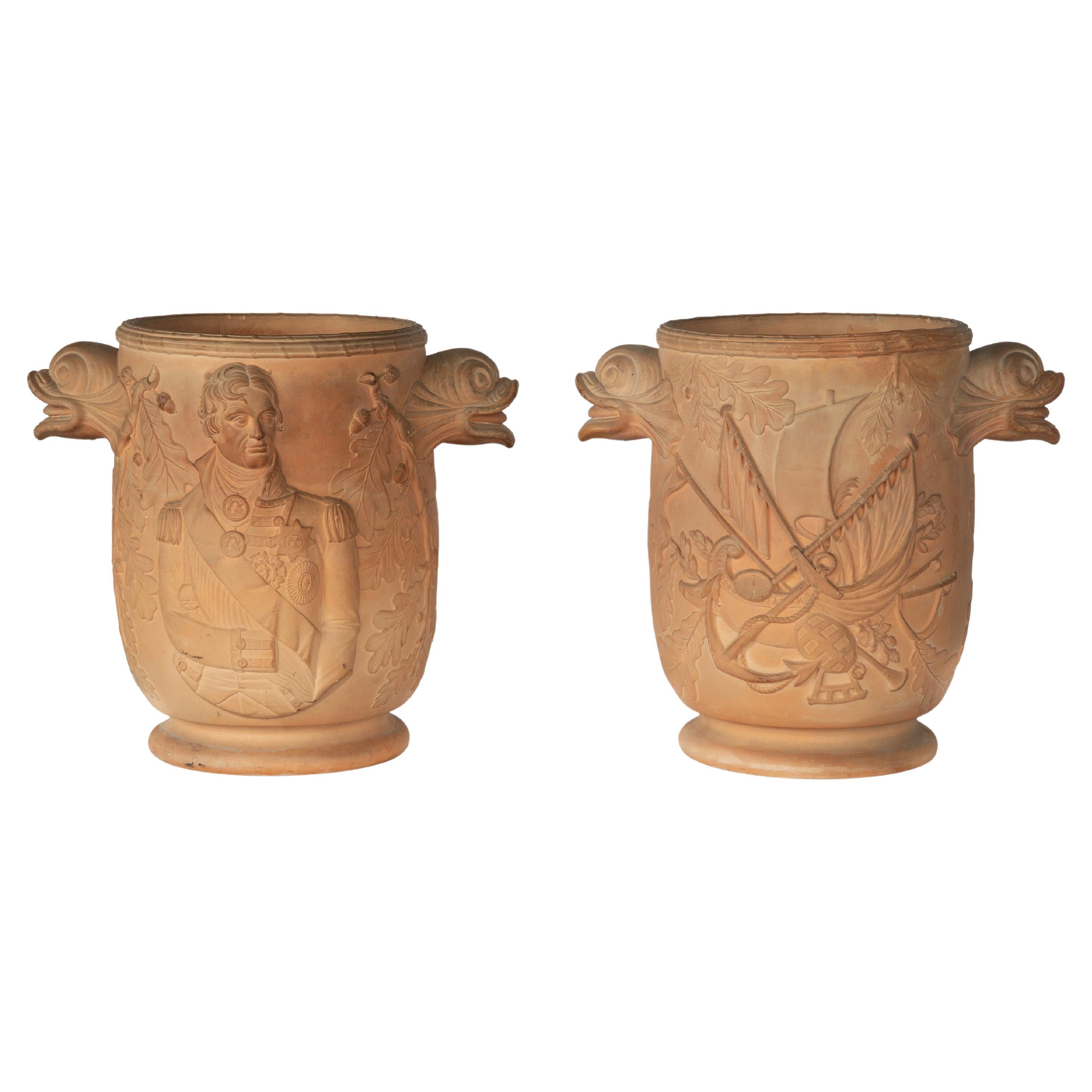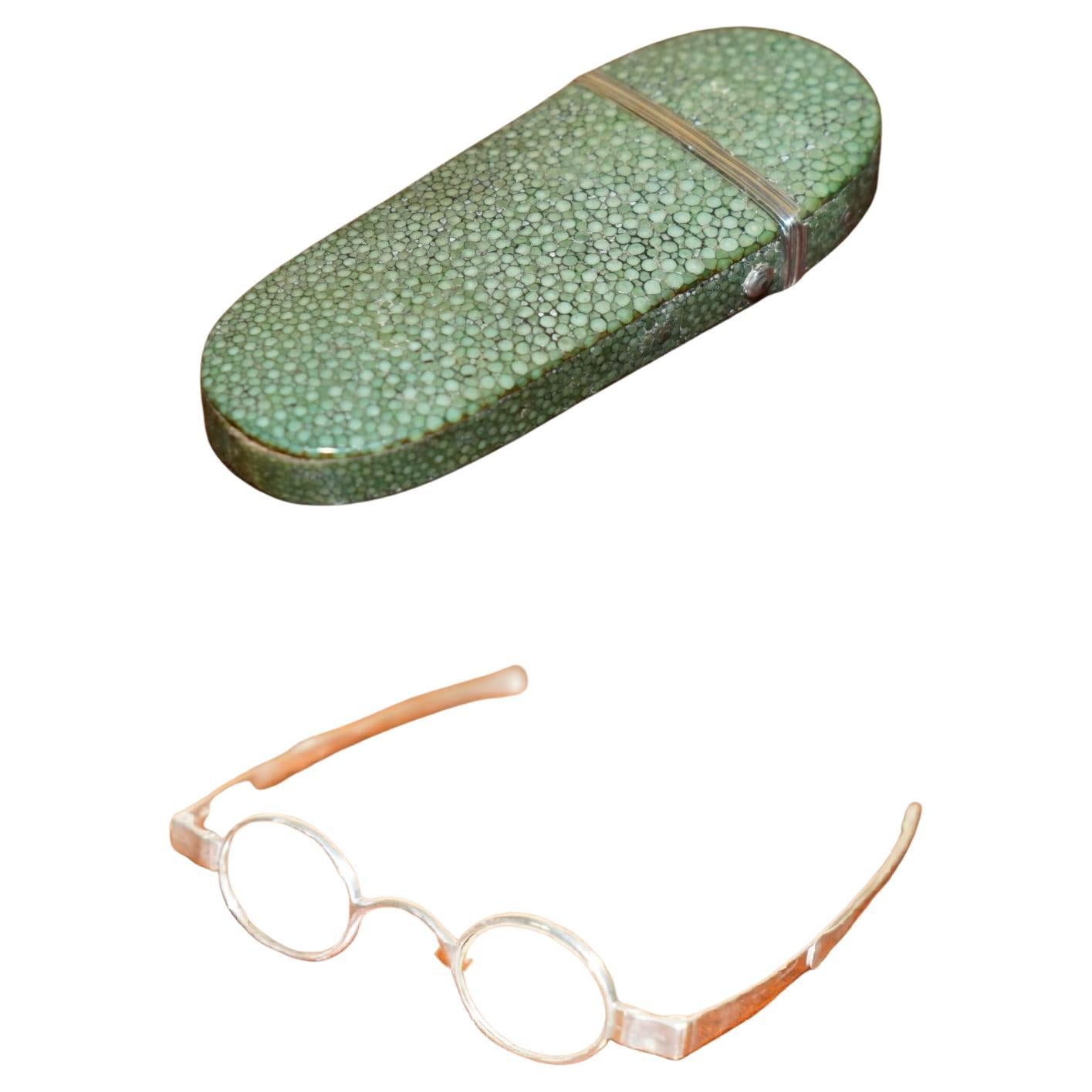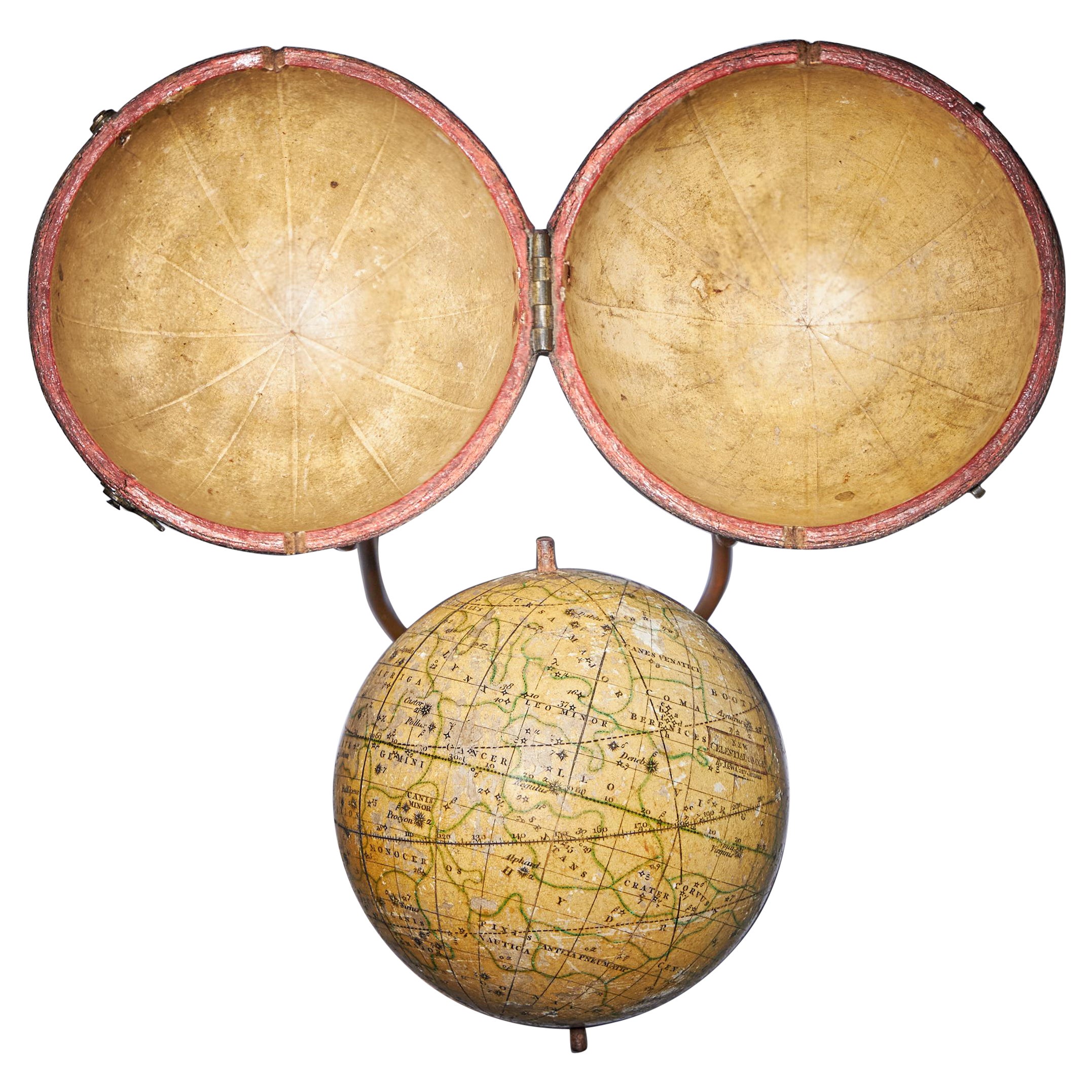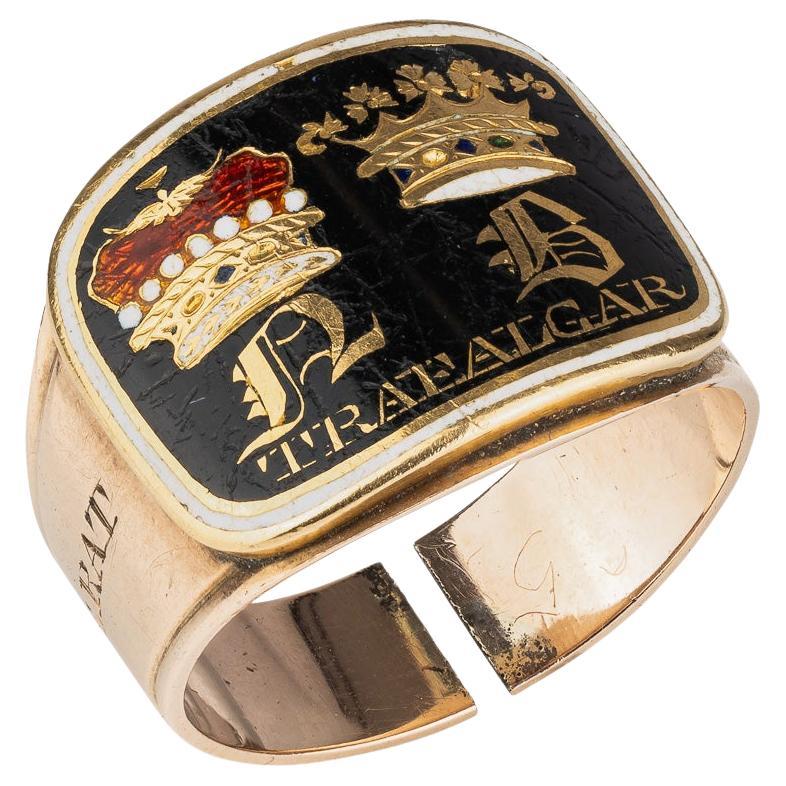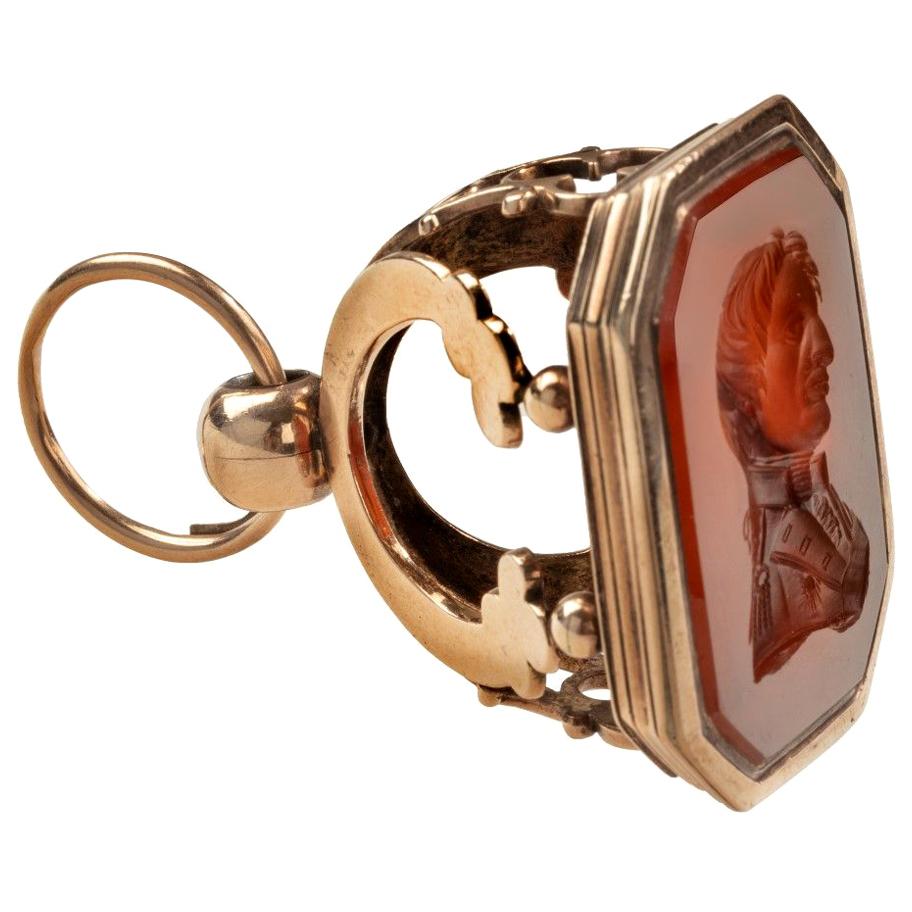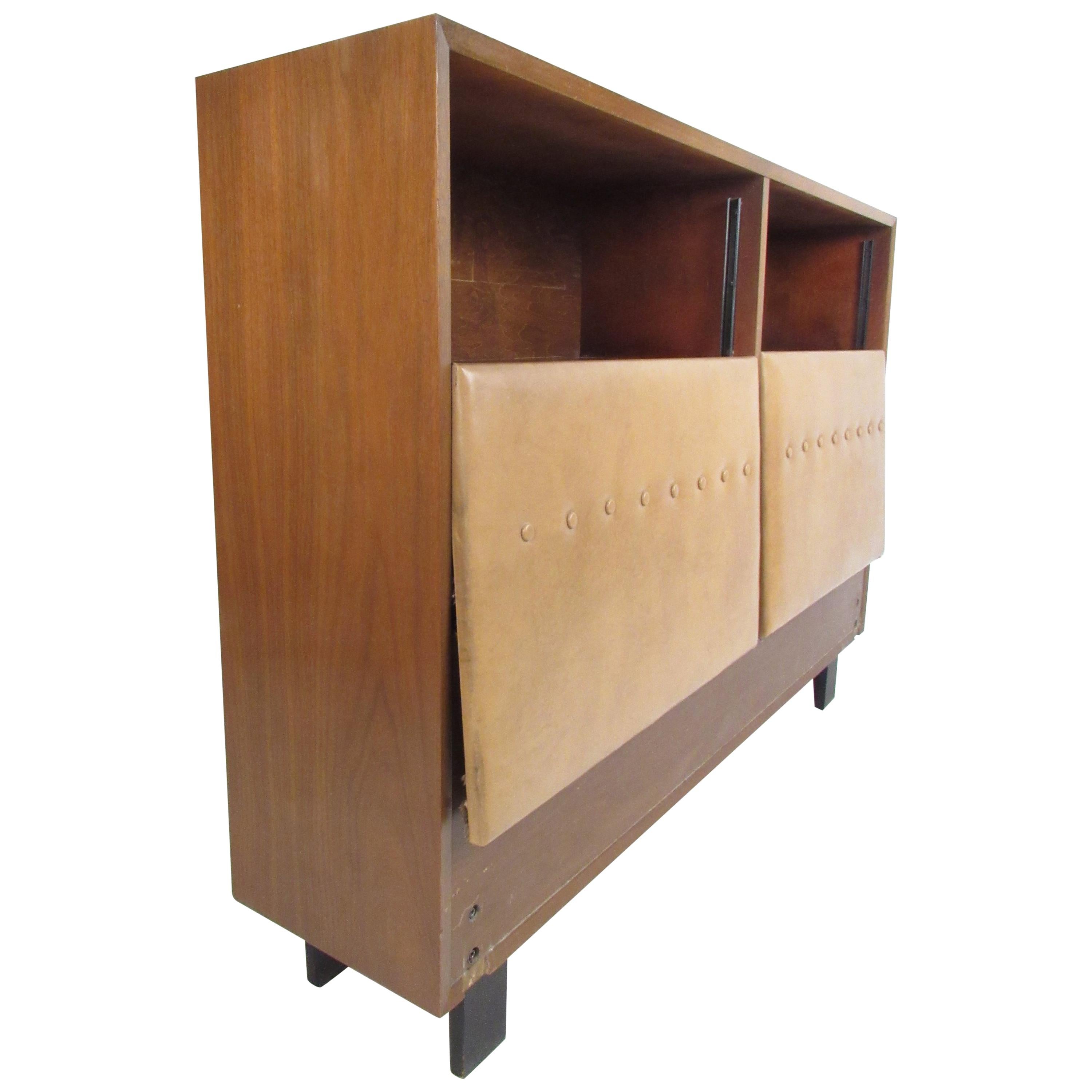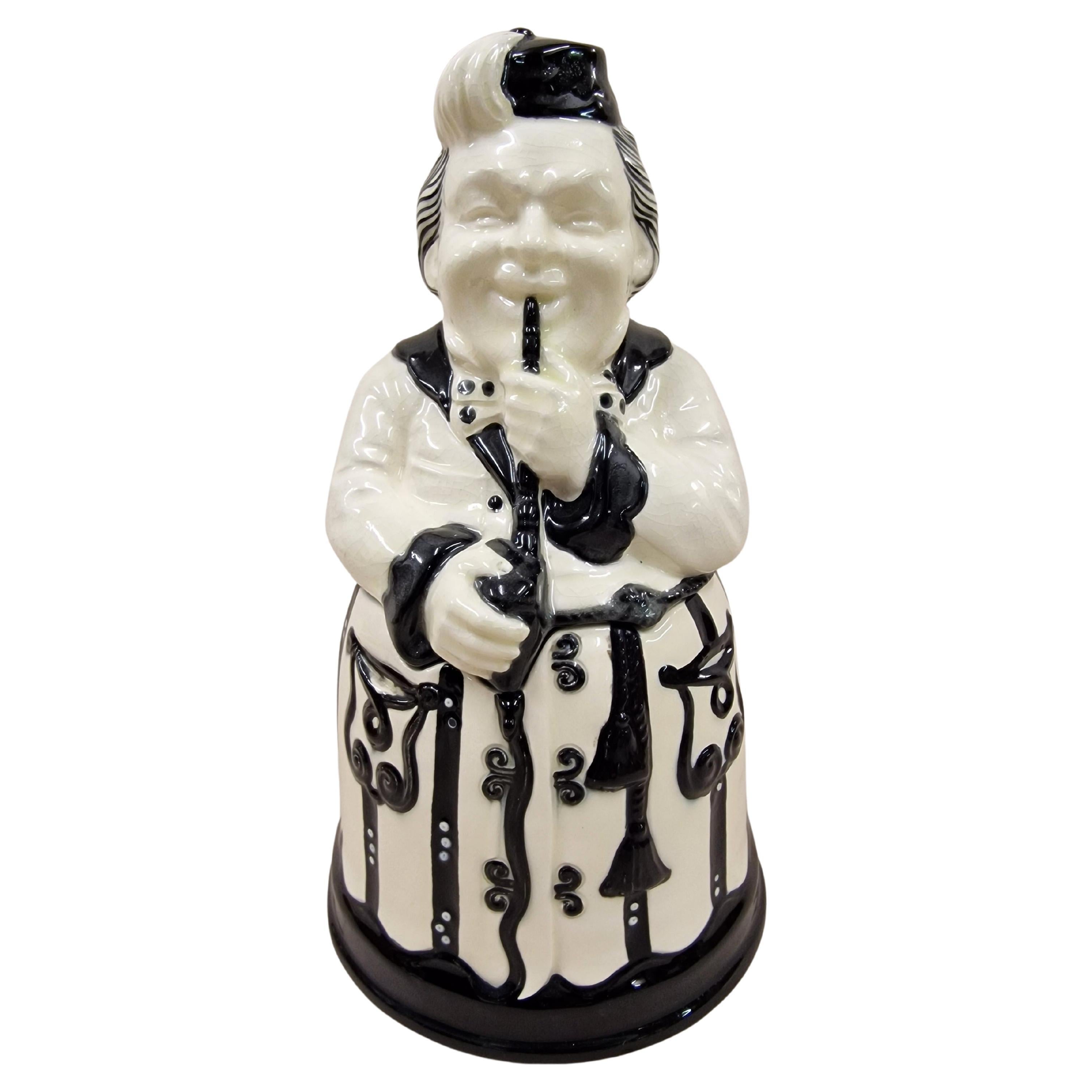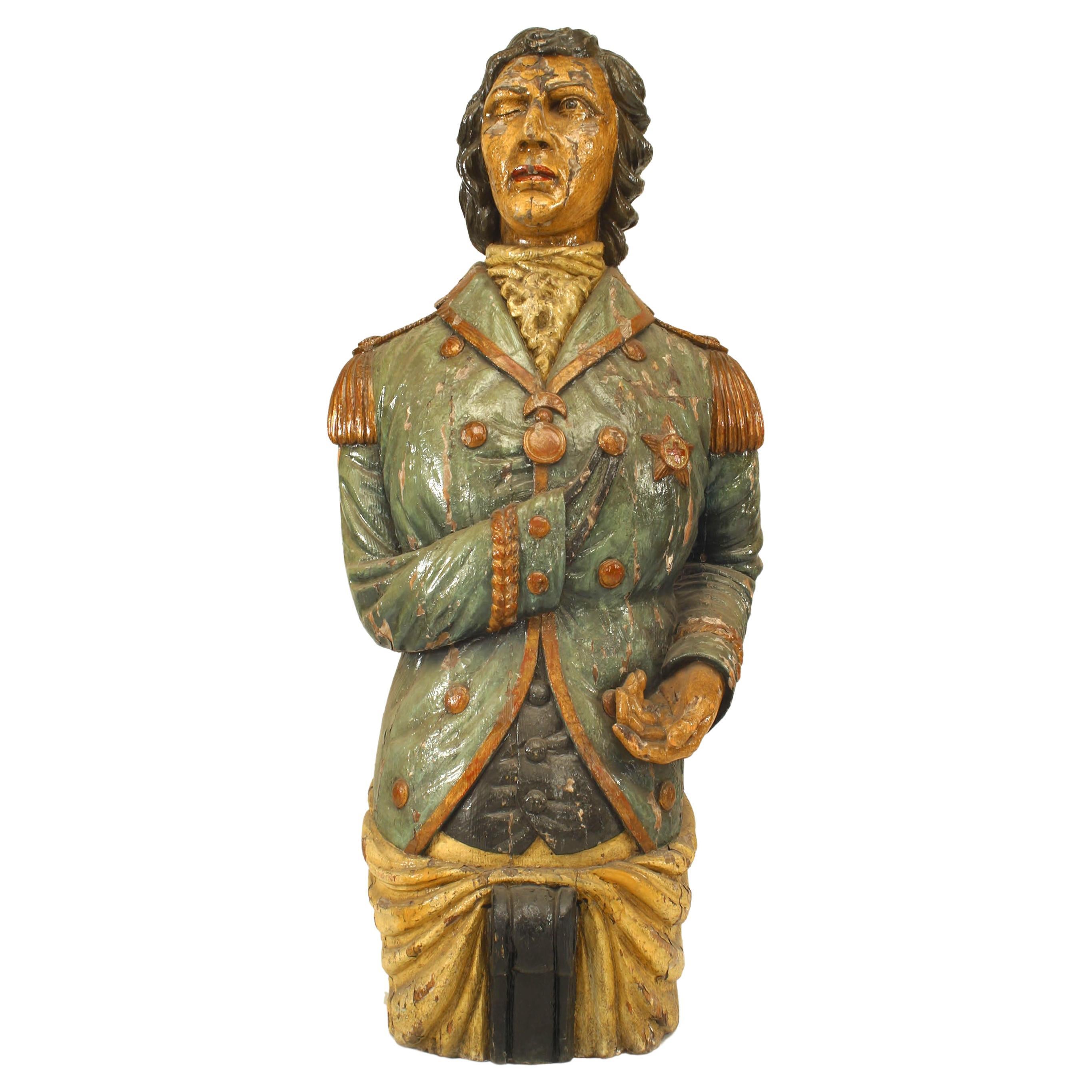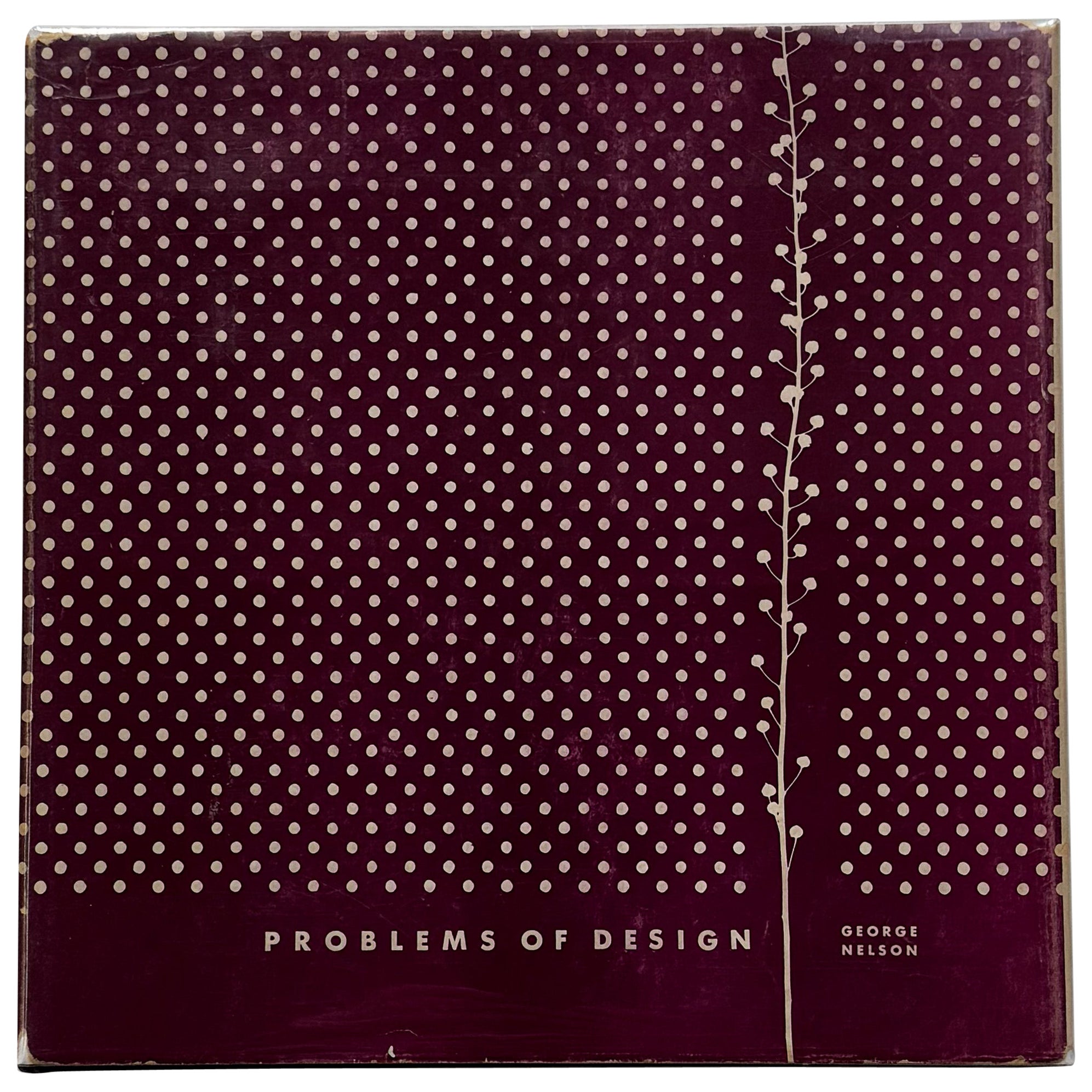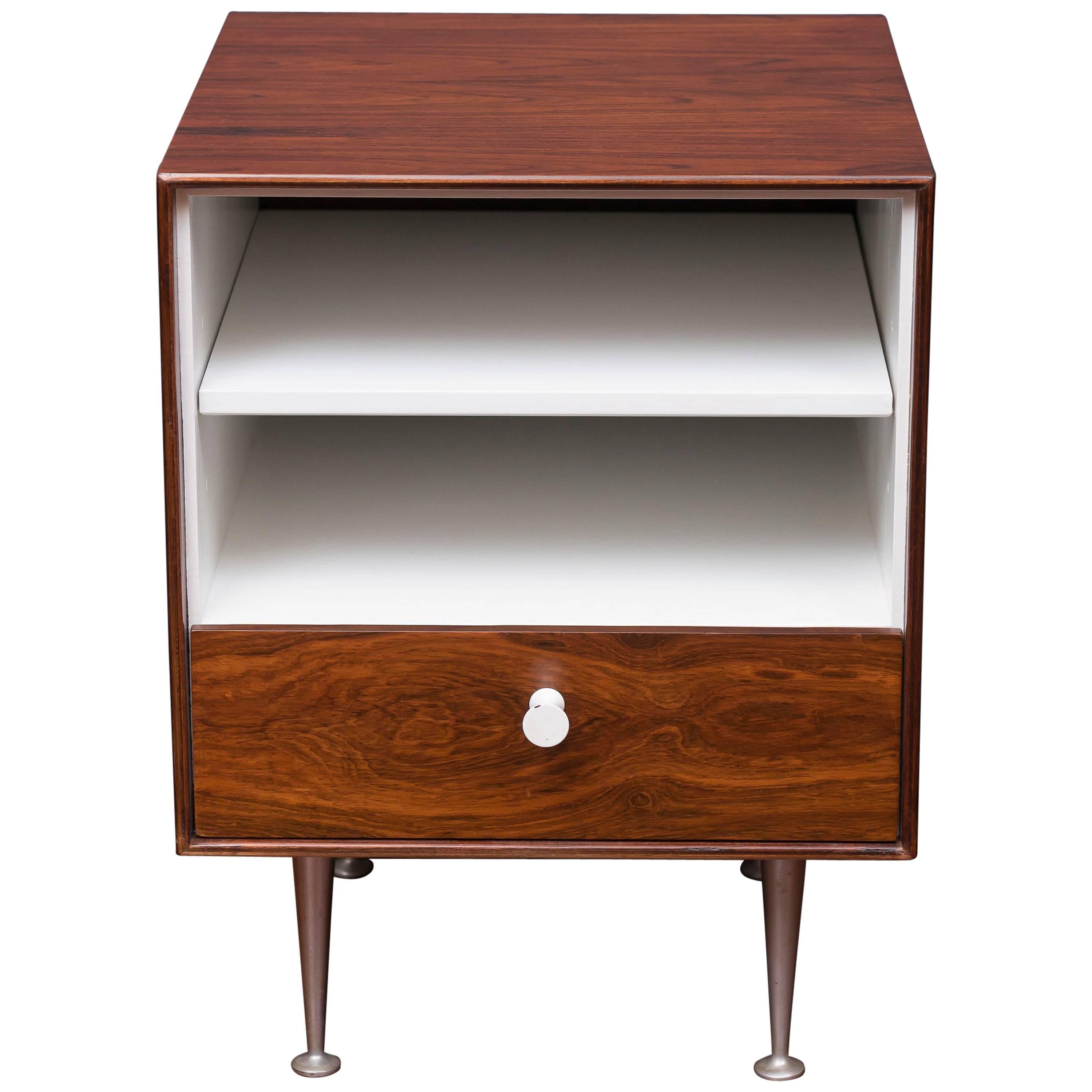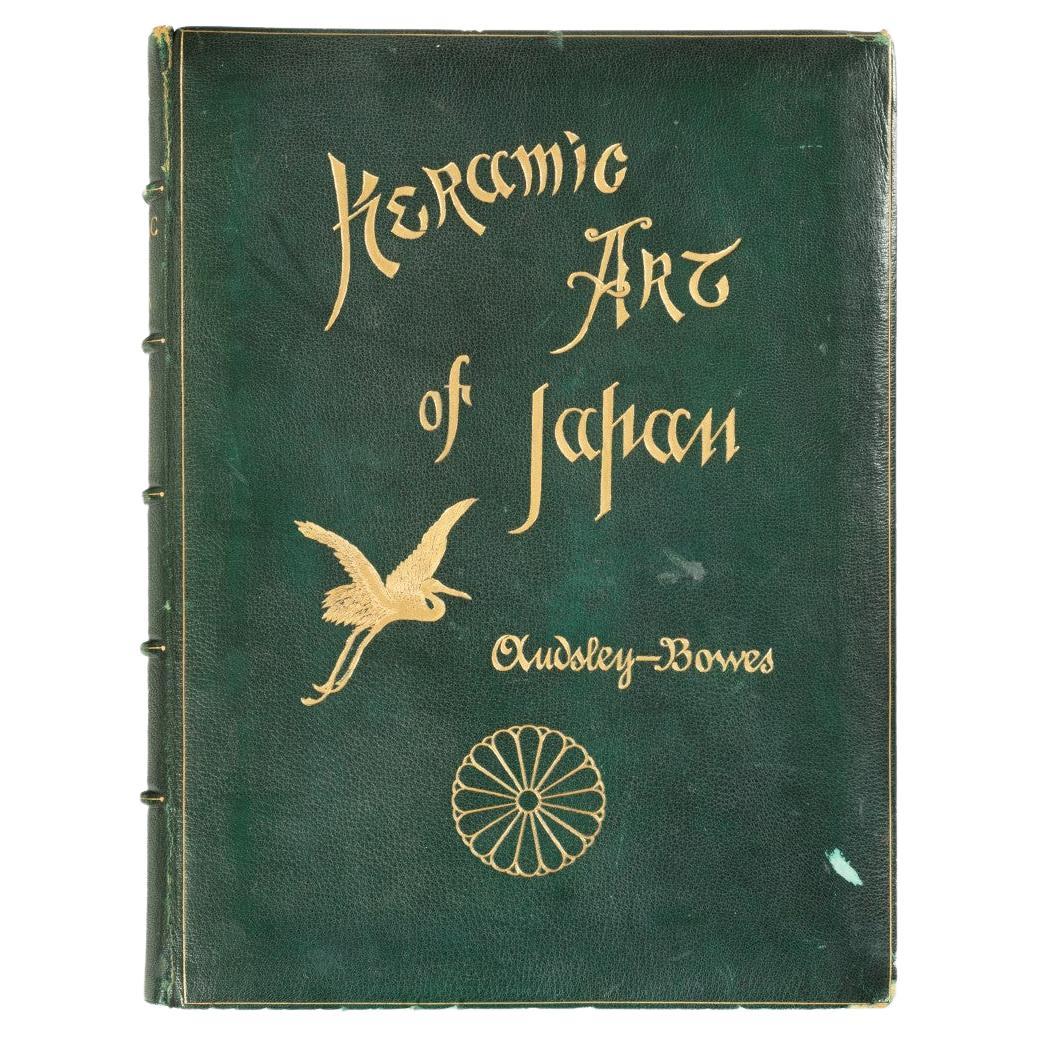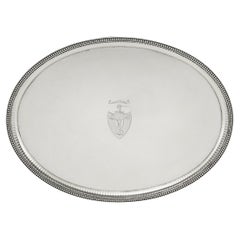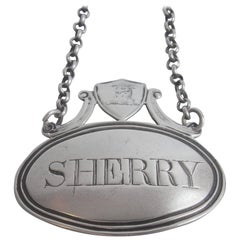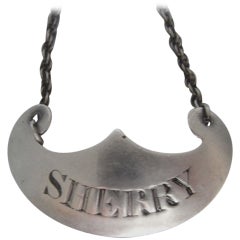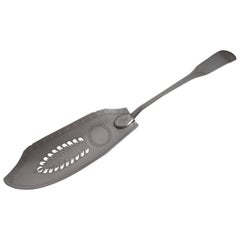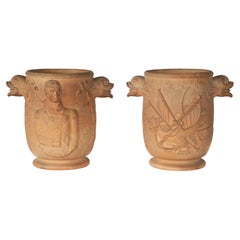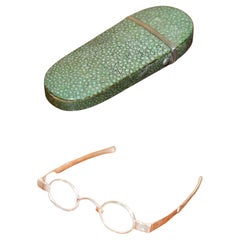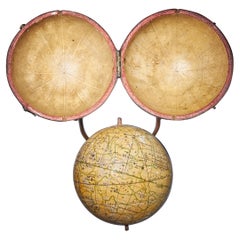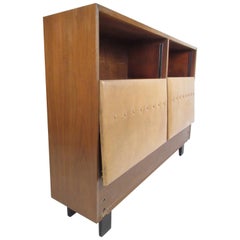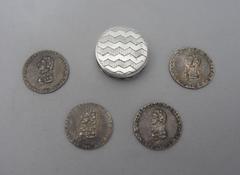
ADMIRAL LORD NELSON. An exceptionally rare George III Nelson Counter Box and Co
View Similar Items
Want more images or videos?
Request additional images or videos from the seller
1 of 6
ADMIRAL LORD NELSON. An exceptionally rare George III Nelson Counter Box and Co
About the Item
- Dimensions:Height: 0.1 in (2.54 mm)Diameter: 0.9 in (2.29 cm)
- Place of Origin:
- Period:
- Date of Manufacture:1805
- Condition:
- Seller Location:London, GB
- Reference Number:1stDibs: LU97815278913
About the Seller
5.0
Recognized Seller
These prestigious sellers are industry leaders and represent the highest echelon for item quality and design.
Established in 1967
1stDibs seller since 2013
27 sales on 1stDibs
Authenticity Guarantee
In the unlikely event there’s an issue with an item’s authenticity, contact us within 1 year for a full refund. DetailsMoney-Back Guarantee
If your item is not as described, is damaged in transit, or does not arrive, contact us within 7 days for a full refund. Details24-Hour Cancellation
You have a 24-hour grace period in which to reconsider your purchase, with no questions asked.Vetted Professional Sellers
Our world-class sellers must adhere to strict standards for service and quality, maintaining the integrity of our listings.Price-Match Guarantee
If you find that a seller listed the same item for a lower price elsewhere, we’ll match it.Trusted Global Delivery
Our best-in-class carrier network provides specialized shipping options worldwide, including custom delivery.More From This Seller
View AllExceptionally Fine George III Drinks Salver, London, 1781, Wakelin & Taylor
By John Wakelin & William Taylor
Located in London, GB
This exceptionally fine George III antique sterling silver Salver was made in London in 1781 by the Royal Silversmiths, Wakelin & Taylor. The Salver is of an unusual size and is oval...
Category
Antique 1780s English George III Platters and Serveware
Materials
Sterling Silver
Rare and Unusual George III Heraldic Wine Label by Langlands and Robertson
Located in London, GB
The label is oval in form with a double thread edge and is engraved for SHERRY. This example has a shield above, flanked by two scroll supporters, which is engraved with a contempora...
Category
Antique 1780s English More Dining and Entertaining
Rare George Iii Wine Label Maker's Mark of Ig and Assayed in Edinburgh
Located in London, GB
The Label is of the Scottish crescent form and is of sauce label size. This example is well marked and is engraved for "sherry."
Length: 1.35 inches, 3.38cm.
Category
Antique 18th Century and Earlier British Barware
Extremely Rare George III Serving Slice Made by James Erskine
Located in London, GB
The serving slice is modelled in the rare "Ore" pattern and the handle is engraved with prick dot borders and a flower head, where it is attached to the main blade. The centre of the...
Category
Antique Early 19th Century British More Dining and Entertaining
Rare Garniture of George III Baskets, London, 1778, Philip Freeman
By Robert Hennell
Located in London, GB
This extremely rare and fine garniture of George III neo classical baskets were made in London in 1778 by Philip Freeman. The Baskets all stand on a square pedestal foot which is pierced with horizontal pails and roundels, as well as being engraved with prick dot designs. The Classical vase shaped main bodies are also pierced with horizontal pails and roundels and the front of each piece displays a disc cartouche engraved with a contemporary Crest. The rim and swing handle, instead of being decorated with beading, are unusually engraved with various prick dot and bright cut bands, including stylised flower heads. Each basket is in excellent condition, has a blue glass liner and is fully marked in the foot.
The baskets are of a very rare decorative design and Philip Freeman was known for producing unusual baskets and pails, although his work does not survive in great quantity. These are also unusual in that they stand on a pierced foot, echoing the designs on the main body. The smaller baskets would have been used for cream and the larger ones for sugar, however it is extremely rare to find a garniture. They are almost always found singly or in pairs, in sizes. A very rare Classical garniture of outstanding quality.
Measures: Height of the sugar basket, to the rim: 5.4 inches, 13.5cm.
Height of the cream basket...
Category
Antique 1770s English George III Platters and Serveware
Materials
Sterling Silver
George III Neo Classical Wine Ewer by John Rowbotham & Co, Sheffield, 1774
Located in London, GB
A rare George III Neo Classical Water/Wine Ewer made in Sheffield in 1774 by John Rowbotham & Company.
This beautiful Jug stands on a square pedestal foot, with four ball feet. The ...
Category
Antique 18th Century English Neoclassical Pitchers
Materials
Silver, Sterling Silver
You May Also Like
A Pair of Davenport Admiral Lord Nelson Terracotta Wine Coolers
Located in Lymington, Hampshire
A Pair of Davenport Admiral Lord Nelson Terracotta Wine Coolers, each relief moulded with a portrait of Admiral Viscount Nelson, in full uniform and medals, between two acorn-bearing oak boughs on one side and a naval panoply on the reverse. The rim comprises tied reeds with twin dolphin-mask handles attached to the sides. English, circa 1815.
Two very similar examples from the collection of Horatio, third Lord Nelson, are illustrated in an article titled ‘Nelson Relics and Relic Hunters’ in The Windsor Magazine, Vol. XX. June-November 1904, p.519. (See also page 4.) A thirdwith a paper label stating ‘Exceedingly rare (Lockett)’ was exhibited at the Hanley Museum, item No.1721 (see Britain on the High Seas, from Nelson to Churchill, p.71, Wick Antiques...
Category
Antique Early 19th Century English Nautical Objects
Materials
Terracotta
RARE ANTiQUE GEORGE III SHAGREEN GLASSES SPECTACLES CASE AND FOLDING GLASSES
Located in West Sussex, Pulborough
Royal House Antiques
Royal House Antiques is delighted to offer for sale this absolutely stunning George III Shargeen & Silver Spectacles case with folding glasses...
Category
Antique 18th Century European George III Collectible Jewelry
Materials
Glass
Rare George III Celestial Pocket Globe by Cary, London
By Cary
Located in Oxfordshire, United Kingdom
A fine and rare 3" celestial pocket globe by G & W Cary, Strand, London circa 1791, housed in its original sharkskin case.
A companion globe to terrestrial globes of this type we...
Category
Antique Late 18th Century English George III Aviation Objects
Materials
Plaster
Midcentury George Nelson Walnut Headboard
Located in Brooklyn, NY
A beautiful vintage modern headboard with storage by George Nelson. This stylish bedroom piece boasts tufted vinyl doors that slide down to unve...
Category
Vintage 1970s American Mid-Century Modern Bedroom Sets
Materials
Faux Leather, Walnut
$840 Sale Price
30% Off
Hardstone Intaglio Portrait Seal of Admiral Viscount Nelson, circa 1800
Located in Lymington, Hampshire
This monumental George III gold and hardstone intaglio fob seal comprises a profile portrait of the head and shoulders of Admiral Viscount Nelson, in uniform displaying...
Category
Antique Early 1800s English Collectible Jewelry
Materials
Gold
A Gold And Enamel Mourning Ring For Lord Nelson By John Salter, England, 1806
Located in Royal Tunbridge Wells, Kent
An extremely rare ring that commemorates the naval hero, Horatio Nelson, who died in 1805 at the Battle of Trafalgar, fighting against the Napoleonic forces. Dr William Nelson, the admiral's brother, ordered 58 mourning rings for family and friends and every admiral and post-captain who fought at the Battle of Trafalgar . The ring is inscribed on the bezel ‘Trafalgar’; outside the hoop with Nelson’s motto in Latin, ‘Let him who earned it bear the palm [of victory]’, adopted by Nelson from a poem ‘Ad Ventos’ written in 1727 by John Jortin (1698-1770). Inside is the inscription ‘Lost to his country 21 October 1805, aged 47’. The initials N and B stand for Nelson and Bronte.
Admiral Nelson was given the title of Duke of Bronte in 1799 by the King of Sicily and in 1801 became a Viscount. The two coronets above the initials refer to these titles. Tthe motto Palmam qui meruit ferat ("let him who has earned it, bear the palm") was added to his coat of arms in 1798 after the Battle of the Nile. Nelson was buried with full honours in St Paul's Cathedral. His cortege consisted of 32 admirals, over a hundred captains, and an escort of 10,000 soldiers.
This ring is an example of only fifty-eight that were made by Nelson's jeweller John Salter in 1806. Thirty-one were for Nelson's close family and friends, the rest for pall-bearers and other dignitaries (see The Nelson Dispatch, vol.3 pt.XII, oct.1990). Three similar examples of this ring are held extremely prestigious museums in the capital. One is in the Greenwich National Maritime Museum in London, another in The British Museum in London and another in the collection of the Victoria & Albert Museum, London, exhibited in the Jewellery Gallery, case 23, no. 8.
The ring has a particularly special provenance, arguably like no other mourning ring of Admiral Nelson’s. The ring belonged to the Reverend Alexander John Scott. The Reverend Alexander John Scott (1768-1840) was a British naval chaplain. He was appointed to the flagship H.M.S. Victory in 1803 where he served as private secretary to Lord Nelson. He was with Nelson when when he was shot on the quarter-deck of the Victory at the battle of Trafalgar on the 21st October 1805. Scott attended his dying chief in the cockpit of the flagship, receiving his last wishes. He refused to leave Nelson's body until it was brought back to England and placed in the coffin to lie in the Painted Hall Greenwich.
The ring, lock of hair and music book were passed down by the direct descendants of the Reverend Alexander John Scott's family and eventually gifted to the previous owners. The music book was a personal possession of the Reverend which gives watertight provenance of the person who owned the ring.
It is not clear exactly what Admiral Nelson’s last words really were although Scott documents Nelson’s last words to be “God and my country“. However, it is also recorded that a statement during his last hours was "Thank God I have done my duty.” Perhaps these two statements uttered in the last moments sound similar when mumbled by a feeble dying man. Nonetheless, it is noteworthy is that Scott remained by Admiral Nelson’s side as he died and his version is probably the most reliable.
The lock of hair is reputedly that of Lord Admiral Nelson. Without a DNA test there can be no conclusive proof of such. However, given that Reverend Alexander John Scott was with Nelson from the moment he was shot on the quarter-deck of H.M.S. Victory until the moment he was placed in his coffin, there is no reason to believe it is not a lock of Nelson’s hair.
It is difficult to overstate the significance and rarity of Nelson’s mourning rings. With only fifty-eight made, the vast majority of them were given to close family members and only a few were given to close friends. A close friend who receives a morning ring...
Category
Antique 19th Century English Historical Memorabilia
Materials
Gold, Enamel
Recently Viewed
View AllMore Ways To Browse
Lord Nelson
Battle Of Copenhagen
Battle Of Trafalgar
Nelson And Nelson Antique Silver
The Battle Of Trafalgar
Admiral Lord Nelson
Used Brass Headboard
Used Newspaper Racks
Vintage Art Deco Night Stands
French Modern Night Stand
No Headboard
Oak Bed Midcentury
200x200 Bed
Antique Instrument Box
Blaeu Maps
Colonial Vintage Collection
Instrument Dial
Map Greece
